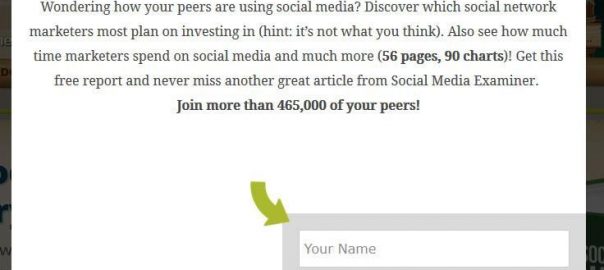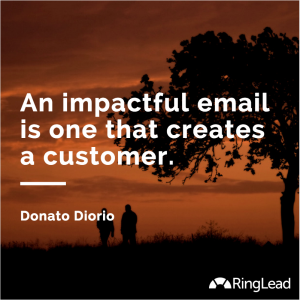Are you thinking about purchasing an email list? I get it, your sales team is hungry for leads and you have to do what it takes to fill the funnel.
This could potentially be a growth hack for your business, right?
Well, that depends. Although it might give you access to hundreds or thousands of leads you didn’t previously have, there’s no way to know for sure you are reaching out to prospective buyers. Worse, it’s possible the people on the list didn’t give their permission to be included in the first place!
In general, you should expect low conversion rates from purchased email lists.
If the leads are cheap, then low conversions are better than no conversions, you say. Here’s why that’s a dangerous marketing mantra to live by.
Subscribers Don’t Know Who You Are
Corey Wainwright sets forth several reasons why buying an email list is a bad idea, but here is one of the main reasons you are unlikely to get a high conversion rate from a list you’ve purchased:
“The contacts have opted in to receive emails, from, say, the list-purchasing company—not your company,” Wainwright says. “Even if the opt-in process includes language like, ‘Opt in to receive information from us, or offers from other companies we think you might enjoy,’ the fact is that the recipient has never heard of your company, and does not remember opting in to receive emails from you.”
The unfortunate tendency here is to get marked as spam since the people on the list don’t know who you are or how you got their email address in the first place. The last thing you want is to get blacklisted by spam filters.
A Purchased List Is a Dead List?
MailChimp tells us that a purchased list is as good as dead.
Here’s the gist of it: “If we look at campaign performance versus the percentage of a mailing list that’s purchased or scraped, we find that positive engagement falls off a cliff as purchased correlation increases. Since most folks have to open an email to unsubscribe, unsubscribers die off too. The only thing that does go up? Complaints.”
Purchased lists will clutter your database with dead leads who may never take the time to unsubscribe. Most marketing and email platforms charge you based on the number of unique emails in your database. When a dead list won’t churn, you may end up paying for those leads —again and again.
MailChimp—and many other reputable email marketing providers—don’t allow the use of purchased lists in the first place. Although not connected to conversion rate, this might be another reason not to buy lists.
Moreover, it’s simply not best practice with an established inbound methodology.
So how do you generate lead lists the inbound way?
Growing an Opt-In List Organically
Growing your own email list is still the best way to create a connection with your target audience. Why? Because you earned their attention.
They’ve engaged with your content, they think you have something valuable to say and they’ve opted in to receive more information on a specific topic.
Here are several ways to grow your own email list.
Create Valuable, Optimized Content
Create content that helps you get discovered in search, and provide an experience that’s different or unique from that of your competitors.
If you offer a lot of value up front, visitors will want to take the relationship to the next level, because they’ll be eager to find out what more you have to share with them.

Brian Dean from Backlinko always creates valuable, long-form content that entices users to want to get on his email list. It makes you think – “If this is what I get for free, what do I get when I subscribe?”
Also focus on creating content that’s shareable. As more of your audience shares your content on social media, you’ll be able to attract more signups, too.
Make It Easy for People to Subscribe
There are times when a multi-step process works because you’ve gotten a visitor to click on a button, and psychologically they’re already in a space to say “yes” when they’re asked to put their email address in a form.
But it’s easy to overcomplicate the process by creating unnecessary steps between the user and the signup form. Try placing simple one-step subscription forms on different parts of your website and test their effectiveness.
CD Baby has a simple subscription form in their footer – no fluff!
Create Compelling Offers
What does your target audience actually want? Templates? Whitepapers or eBooks? Reports? Case studies? Courses? Offer something that’s relevant and valuable, and you will see opt-in rates skyrocket.
 Content Marketing Institute has done a ton of work to figure out what kind of tools and eBooks its target audience wants.
Content Marketing Institute has done a ton of work to figure out what kind of tools and eBooks its target audience wants.
Make Offers Easy to Find
It might seem obvious, but if you’re hiding your downloads on a page no one can find, your visitors will have trouble gaining access to assets they want and need.
Create a proper infrastructure and navigation flow for your website, and place calls-to-action in strategic locations, such as at the end of a blog post.

HubSpot has an entire marketing library that can be accessed from the top navigation – these are all opt-in offers.
Use Persuasive Calls-to-Action
Pay attention to copy, color and imagery. A/B test to find out what resonates best with your audience. Grab their attention with your calls-to-action so they don’t miss out on a valuable offer.

Neil Patel from Quick Sprout creates persuasive calls to action that are hard not to notice.
Experiment With Popups
Popups don’t work for every company in every industry, and can sometimes irritate users. But it’s worth your time to experiment with them because they tend to convert well.
Try using popup windows for a while, and determine whether they give you worthwhile results (for example, finding the unsubscribe rate from this method).

Many sites have popups that show up as you’re about to leave their site; this one is on Social Media Examiner.
To Buy or Not to Buy?
The problem with a purchased list is that you’re probably not going to see a high conversion rate. Your communication style may be different from that of the seller’s, the product offering might not be matched up to the audience, or the list itself might have pre-existing problems that you’re not even aware of.
Building your own list is time-consuming and sometimes requires sophisticated strategies, but in the end, it’s worth every bit of effort you put into it. Subscribers will be more engaged, and you’ll see a much higher conversion rate, as long as your inbound strategy is well-formed around your buyer personas.
Digital & Social Articles on Business 2 Community(38)







